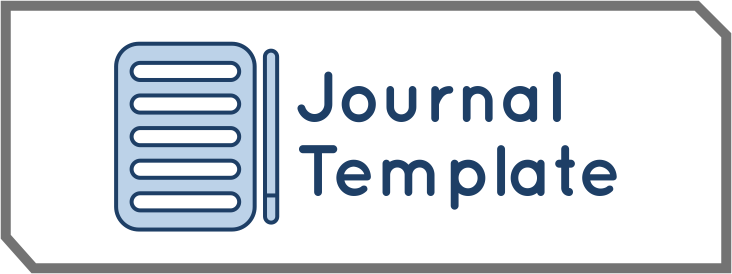Hubungan Kelelahan dan Ketegangan Emosional dengan Baby Blues pada Ibu Postpartum
DOI:
https://doi.org/10.57214/jka.v9i2.962Keywords:
Baby Blues, Emotional Tension, Fatigue, Postpartum Mothers, PreventionAbstract
Baby blues is a mild and temporary mood disorder commonly experienced by mothers after childbirth. It is characterized by emotional instability, including sadness, anxiety, irritability, and frequent crying, which may interfere with maternal-infant bonding. This condition is often triggered by a combination of physical and psychological factors, such as hormonal changes, fatigue, and emotional tension. This study aims to examine the relationship between fatigue and emotional tension with the occurrence of baby blues among postpartum mothers at Klinik Pratama Annisa Medika 1. A quantitative research method with a cross-sectional design was employed. A total of 45 postpartum mothers were selected using purposive sampling. Data were collected through structured questionnaires measuring fatigue, emotional tension, and baby blues symptoms. The results were analyzed using the Chi-Square test with a significance level set at p<0.05. The findings indicate a statistically significant relationship between fatigue and the incidence of baby blues (p=0.019), as well as between emotional tension and baby blues (p=0.000). These results suggest that both physical and emotional well-being are crucial factors influencing postpartum mental health. The implications of this study highlight the importance of early identification and management of fatigue and emotional stress in postpartum mothers. Healthcare providers should prioritize psychological support, routine mental health screening, and postpartum education to help prevent the onset of baby blues. Early intervention may improve maternal well-being and promote healthier mother-infant interactions.
References
Afrina, R., & Rukiah, N. (2024). Hubungan tingkat kelelahan dan dukungan sosial suami dengan baby blues maternal pada ibu pasca melahirkan di wilayah Bogor Selatan tahun 2024. Jurnal Sains dan Teknologi, 6(1), 148–151. https://doi.org/10.55338/saintek.v6i1.3346
Arum, R. W., dkk. (2024). Panduan asuhan kebidanan pada masa nifas (post partum). CV Tohar Medika.
Asih, Y. (2021). Buku ajar asuhan kebidanan nifas dan menyusui (dilengkapi dengan evidence based practice dan daftar tilik asuhan nifas). Trans Info Media.
Beck, C. T. (2018). Predictors of postpartum depression: An update. Nursing Research, 67(3), 152–160.
Bobak, I. M., Lowdermilk, D. L., & Jensen, M. D. (2017). Maternity nursing (8th ed.). Mosby Elsevier.
Breslow, S. M., Chew, L., & Marz, J. (2017). Fatigue and depression among postpartum women: A review of recent literature. Journal of Women’s Health, 26(2), 143–150.
Ciselia, D., & Oktari, V. (2021). Asuhan kebidanan masa nifas. Jakad Media Publishing.
Dennis, C. L., & Falah-Hassani, K. (2016a). Prevalence of antenatal and postpartum depression among women in low- and middle-income countries: A systematic review. Journal of Affective Disorders, 202, 309–323.
Dennis, C. L., & Falah-Hassani, K. (2016b). Prevalence of postpartum depression in community-based studies: A systematic review. Journal of Affective Disorders, 202, 58–64.
Desfanita, dkk. (2015). Faktor-faktor yang memengaruhi postpartum blues. Jurnal Online Mahasiswa (JOM) Universitas Riau. http://jom.unri.ac.id/
Feldman, R., et al. (2018). Postpartum depression and child development: An overview. Current Psychiatry Reports, 20(4), 34.
Frost, A., et al. (2019). Physical recovery after childbirth: A systematic review of women’s perspectives. Journal of Women’s Health, 28(4), 544–554.
Gavin, N. I., et al. (2015). Perinatal depression: A systematic review of prevalence and incidence. Obstetrics and Gynecology, 106(5), 1071–1083.
Gaynes, B. N., Gavin, N., & Meltzer-Brody, S. (2020). Perinatal depression: Prevalence, screening, and treatment. Journal of the American Medical Association, 323(22), 2369–2377.
Harrison, R. L., & Haller, D. L. (2016). Sleep deprivation and the impact of a newborn. Journal of Perinatal Education, 25(2), 74–80.
Indriyani, D., Asmuji, & Wahyuni, S. (2016). Edukasi postnatal dengan pendekatan family centered maternity care (FCMC). Transmedia.
Kementerian Kesehatan Republik Indonesia. (2019). Buku saku pelayanan kesehatan ibu di fasilitas dasar dan rujukan.
Mackin, M. L., & Curry, M. A. (2021). Postpartum depression: A review of recent studies on prevalence, risk factors, and intervention strategies. Journal of Perinatal Nursing, 34(4), 252–260.
Marantika, B. (2019). Gambaran tingkat stres pada siswa dalam penerapan full day school di SMA Negeri Kota Surakarta [Skripsi, Universitas Negeri Surakarta].
Maryunani, A. (2017). Asuhan ibu nifas dan asuhan ibu menyusui. IN Media.
Mayadi, E. L., dkk. (2022). Hubungan kelelahan ibu primipara dengan kejadian postpartum blues di Puskesmas Kecamatan Jatinegara Jakarta Timur tahun 2022.
Meltzer-Brody, S. (2017). Postpartum depression: A review of clinical characteristics, treatment, and future directions. Journal of Clinical Psychiatry, 78(7), e1448–e1454.
Napitupulu, A. D., Sinaga, R. L., & Harefa, S. (2019). Faktor-faktor yang memengaruhi kelelahan pada ibu pasca melahirkan. Jurnal Keperawatan Indonesia, 12(3), 101–108.
Norwitz, E. R., et al. (2018). Obstetric complications and maternal exhaustion. Obstetrics and Gynecology, 131(4), 681–690.
Nugraheni, H. T. (2017). Hubungan kehamilan usia dini dengan kejadian postpartum blues di RSUD Wonosari tahun 2017 [Skripsi, Universitas Ahmad Dahlan].
O’Hara, M. W., & Wisner, K. L. (2016). Perinatal mental illness: Definition, description and aetiology. Best Practice & Research Clinical Obstetrics & Gynaecology, 28(1), 3–12.
Oktavia, R., & Deviana, R. (2021). Hubungan kelelahan postpartum pada ibu primipara dengan motivasi pemberian ASI. Jurnal Kesehatan Mercusuar, 4(2), 66–73.
Putri, W. D., Rukiyah, A. Y., & Fadilah, R. (2018). Hubungan kelelahan dengan kejadian baby blues pada ibu nifas. Jurnal Kebidanan Indonesia, 9(2), 95–102.
Rahayu, S., & Sari, A. (2017). Strategi mengelola kelelahan postpartum. Jurnal Keperawatan Maternitas, 8(1), 49–54.
Rahayu, S., Andriani, T., & Mulyani, E. (2019). Faktor-faktor yang berhubungan dengan kejadian baby blues syndrome pada ibu post partum. Jurnal Keperawatan Jiwa, 7(1), 53–60.
Rinaldi, S. F., & Mujianto, B. (2017). Bahan ajar teknologi laboratorium medis (TLM): Metodologi penelitian dan statistik. Kementerian Kesehatan Republik Indonesia, Pusat Pendidikan Sumber Daya Manusia Kesehatan.
Saxena, S., et al. (2017). Postpartum mental health: A review of the literature. Psychiatry Research, 249, 11–16.
Sinaga, E. L. F. (2017). Hubungan keletihan ibu postpartum dengan motivasi pemberian ASI pada ibu postpartum 7–14 hari di Posyandu wilayah kerja Puskesmas Muara Enim [Skripsi, Poltekkes Kemenkes Palembang].
Stewart, M. A., et al. (2015). The role of social support in postpartum depression. Journal of Psychiatric Research, 71, 19–25.
Sudarwati, E., & Rismayani, M. (2016). Kelelahan postpartum dan dampaknya terhadap kesehatan mental ibu. Jurnal Psikologi Kesehatan, 9(1), 45–52.
Suhri, A. A. (2022). Hubungan stres dengan siklus menstruasi pada mahasiswa di Fakultas Kedokteran dan Ilmu Kesehatan UIN Alauddin Makassar [Skripsi, UIN Alauddin Makassar].
Surahman, R., Rachmat, M., & Supardi, S. (2016). Modul bahan ajar cetak farmasi: Metodologi penelitian. Kementerian Kesehatan Republik Indonesia, Pusat Pendidikan Sumber Daya Manusia Kesehatan.
Tilana, D. D. (2021). Hubungan dukungan suami, dukungan keluarga dan penyesuaian diri terhadap peran baru sebagai ibu dengan kejadian postpartum blues wilayah kerja Puskesmas Andalas [Skripsi, Universitas Andalas].
Widhiastuti, R., & Muryani, S. (2021). Studi kualitatif: Identifikasi kebutuhan perawatan bayi BBLR di rumah dengan pendekatan family centered maternity care. Jurnal Smart Keperawatan, 8(2), 117. https://doi.org/10.34310/jskp.v8i2.476
Winarningsih, R. A., dkk. (2024). Panduan asuhan kebidanan pada masa nifas (post partum). Tohar Media.
Downloads
Published
How to Cite
Issue
Section
License
Copyright (c) 2025 Jurnal Kesehatan Amanah

This work is licensed under a Creative Commons Attribution-ShareAlike 4.0 International License.








